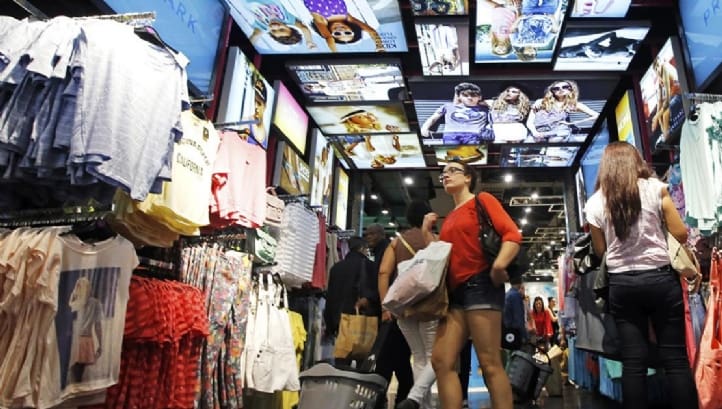The United Nations (UN) has launched a new alliance aimed at uniting businesses to combat the fashion sector’s biggest environmental and social challenges, including waste, carbon emissions and modern slavery.
The fashion industry is believed to produce 80-100 billion garments a year and account for one-tenth of global carbon emissions
Called the UN Alliance for Sustainable Fashion and unveiled late last week at the UN Environment Agency, the members of the collaborative scheme will identify “gaps” in the actions UN agencies are taking to solve fashion’s sustainability problems by championing a joined-up approach between departments.
This analysis will be used to shape future UN initiatives, improve existing schemes and lobby national governments to change their policies in ways which will drive positive change across the fashion industry. According to the UN, these actions could spur the development of new fibres and textile recycling technologies, encourage the industry to take more ambitious action and change consumer behaviours.
The alliance currently has eight member organisations – Connect4Climate; the International Labour Organisation; ITC Ethical Fashion Initiative; the UN Development Programme; the UN Economic Commission for Europe; UN Environment, UN Global Compact and the UN Office for Partnerships – with fashion brands, retailers and suppliers now being encouraged to sign up.
As for consumers, the UN is encouraging members of the public to get involved in the Alliance’s work through a series of pop-up fashion installations across the globe, which will be used to showcase green innovations from the sector and to highlight the scale of its environmental impact. Live updates from these events will be published on the organisation’s Instagram stories, providing consumers with insight from sustainable fashion experts.
“By using fashion as a form of activism and empowerment, the UN Alliance for Sustainable Fashion doesn’t perceive sustainability as a limitation to fashion, but rather a trigger for bringing real creativity and passion into the industry,” UN Environment Assembly President Siim Kiisler said.
“Research shows that fashion presents many opportunities for reducing waste and improving the environment – but the fashion industry cuts across many sectors, and so to capture the full opportunity, the UN and its partners need an integrated approach that goes beyond individual Sustainable Development Goals.”
Green: The new black?
The global fashion sector is believed to employ more than one in ten working-age people in the world and is therefore a key driver of economic growth.
But the industry also accounts for one-tenth of the world’s annual carbon emissions, 5% of global water use and is classed – alongside technology and agriculture – as one of the sectors with the highest risk of modern slavery in supply chains. Moreover, the scale of the sector has now reached a point where between 80-100 billion garments and 20 billion pairs of shoes are believed to be manufactured annually, with the equivalent of a bin lorry full of clothing being sent to landfill or incineration worldwide every minute.
In a bid to meet these large challenges with equally sizeable action, fashion brands and retailers are increasingly beginning to join collaborative initiatives as well as setting their own internal goals. At last year’s COP24 conference in Katowice, for example, 31 corporates signed a new UN charter outlining steps the global fashion sector must take to limit the global temperature increase below 2C. Founding members of the charter, which include the likes of Inditex, Puma and H&M Group, have pledged to work towards carbon neutrality by 2050 – and to encourage the wider sector to follow suit.
Similarly, 43 of the sector’s largest brands have pledged to disclose information regarding supply chain worker treatment to anti-slavery charity Know The Chain, while 80 have joined WRAP’s Sustainable Clothing Action Plan (SCAP) – which covers emissions, water use and resource efficiency – since its launch in 2012.
Such moves come at a time when consumers are increasingly engaging with sustainable fashion amid exposes on primetime TV, new scientific studies laying bare the sector’s full negative impacts and the emergence of alternative business models such as clothing rental and repair. Indeed, Fashion Revolution’s recent survey of 5,000 European consumers found that 88% of respondents would prefer to buy from a clothing company which engages in environmental protection than one which does not.
The topic sustainable fashion is also gaining increased traction among policymakers, with the UK’s Environmental Audit Committee (EAC) having last year undertaken the Government’s first full-scale review into the fashion industry’s social and environmental impacts. The Committee heard evidence from designers, academics, retailers and suppliers over a six-month period, publishing its findings and recommendations in February. Key points include a 1p extended responsibility charge on every garment produced, which will be funnelled into improving textile recycling facilities, and the introduction of mandatory environmental targets for fashion companies with an annual turnover of more than £36m.
Sarah George
Source: edie









